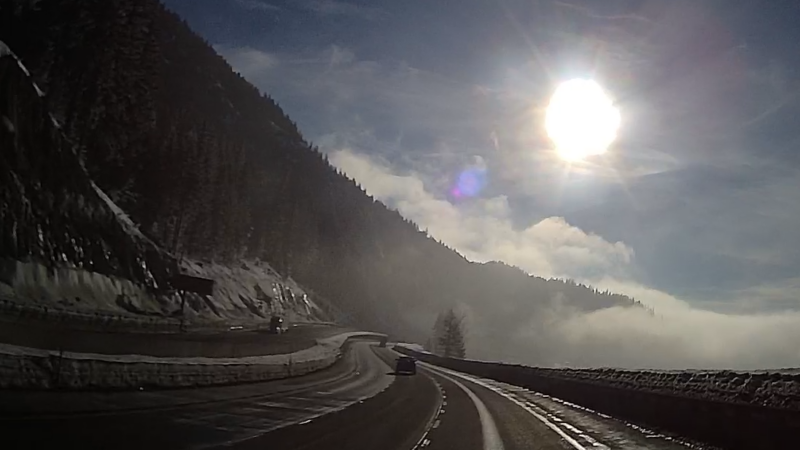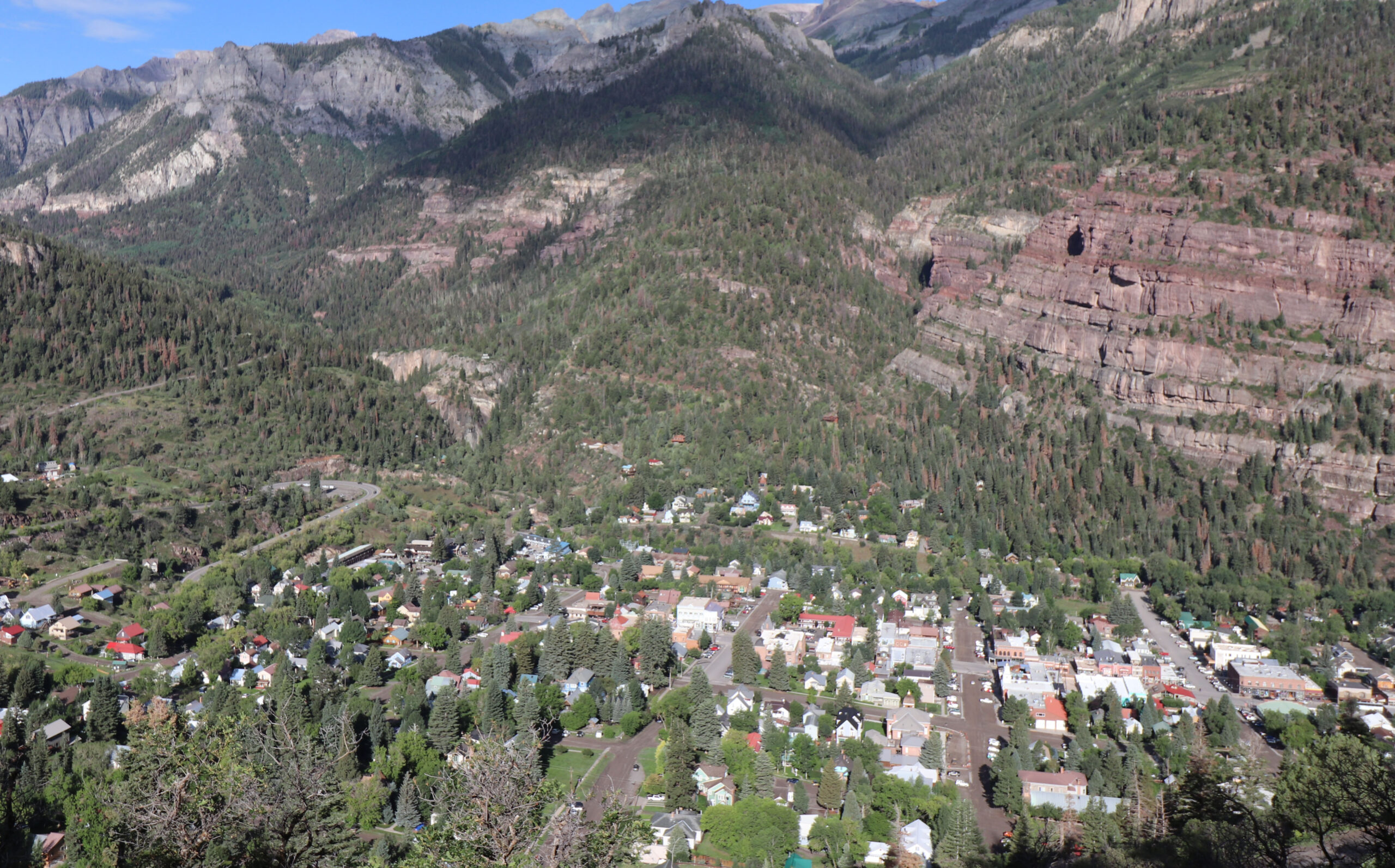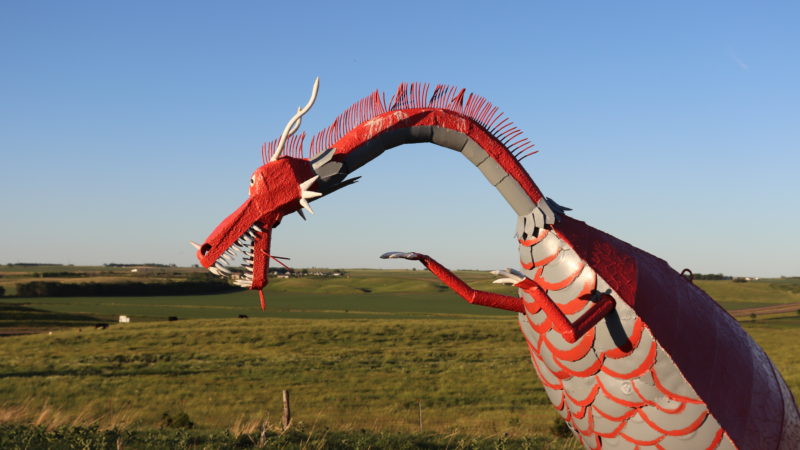The Freedom of the Road Leads Us to an Unexpected Destination
July, 2023
After filling most of our spring season with family get-togethers and a multitude of home-life necessities, we finally loaded up our campervan and once again, embraced the freedom of the open road in early June. It couldn’t come soon enough. In past years we have celebrated the start of summer by heading west to the Rockies – and beyond – from our home in Tulsa. You could almost set your calendar by the direction our van was pointed as the days began to swelter in Oklahoma.
This year we resolved to head east of the Mississippi River – with a desire to explore country we had not yet touched, at least not with much conviction. Our first stay of length was in Great Smoky Mountains National Park in eastern Tennessee. We camped for a week in the park’s Cades Cove Campground. To say we were neophytes to this area is a bit of an understatement. It wasn’t until we opened the park map that we saw our campsite was just a few miles as the crow flies from the Appalachian Trail, which also doubles as the Tennessee – North Carolina border through most of the park.
Nor did we appreciate the significance of where we made our camping reservations. Call it dumb luck when we decided in December 2022 that Cades Cove would be the first stop of our easterly summer tour. Cades Cove is deep in the beauty of the Southern Appalachian Mountains. If you look forward to black bears walking through your heavily wooded campsite, this is the place to be. One day, we were sitting outside soaking up the fresh air when a man casually walked up to us and said, “Excuse me, there is a bear behind you.” He wasn’t warning us to flee to the safety of our van but to get up, turn around, and enjoy the creature from a safe distance. And we did just that. The bear, foraging for food in the brush and trees behind our campsite, proceeded undeterred and uninterrupted – through the entire length of the campground.
Our History Tour
But Cades Cove is more than simply a bear-ogling, tree-hugging paradise. It’s also deep in the history of the Appalachians. The term “cove” is Smokies vernacular for a flat valley surrounded by mountains. Part of Cades Cove special tie to history is its relative isolation in the mountain highlands. It was the cove’s fertile land that first drew in homesteaders. Records show John and Lucretia Oliver were the first permanent white settlers, making a home there in 1818. By 1830, there were churches and schools and by 1850, there were 671 people living on the roughly 6,800 acres in Cades Cove. It was also around this latter time that the cove’s population peaked as some existing residents continued their westward push.
The Cherokee and their ancestors had lived and hunted these lands for thousands of years prior to this time, before being slowly forced out as the settlers moved in. The Cherokee had a different name for the cove. They called it Tsiyahi, Cherokee for otter place. Settlers referred to it as Cades. It is believed to have been named after Chief Kades of the Cherokees.
During their first cove winter of 1818-1819, the Olivers nearly starved to death due to coming to the area wholly unprepared. This was their first winter living in the wilderness and if it weren’t for the Cherokee giving them food, John and Lucretia likely would have died. John had little experience hunting or farming. He made the move because a friend, who would later settle in Cades Cove after that first winter, talked him into it. Lucretia had been unenthusiastic about the move to Cades Cove from the start.
In an ironic and sad twist of fate, John Oliver was part of a militia that removed the remaining Cherokee in the region and put them on the “Trail of Tears” march to Indian Territory (now Oklahoma) in 1838, twenty years after being rescued by them. It’s estimated the Cherokee death toll topped 4,000, or one-quarter of their population, on the journey to Indian Territory from their ancestral lands.
Cades Cove is a microcosm of America’s westward expansion. After our nation’s founding, there was less and less opportunity on the eastern seaboard for the millions who were looking for a place where they could own their own land and be in charge of their own destiny. So, the country’s fast-growing population was quickly expanding westward over the Appalachians. And for the most part, the early emigrant flow was not made up of the well-to-do or well-educated or even recent arrivals to America. They were poor, often penniless, and looking to make a better life for themselves and their families than their brutal current existence allowed.
It wasn’t until we toured the 11-mile Cades Cove Loop Road that we gained an appreciation for the historical and cultural significance of the area. The park itself was created in the 1930s, largely from private land, which was a first for the national park system. As a result, the Loop Road contains several historical buildings, and remnants of farms from the past 200 years. Smoky Mountains National Park in total has preserved some 80 historical structures. This physical evidence of what can be termed our nation’s frontier era documents the settlers’ struggles to survive. Due to the cove’s isolation, little trading with other communities existed in its early years. As more people moved in, they gradually formed a community themselves and the relative isolation helped it remain close-knit, even once trade routes opened to other towns. By preserving this history, the park gives us a fascinating look into our post-colonial, rough-frontier past.
Same Location, Different Journeys
Which brings us full circle back to our trek. We said earlier we eagerly looked forward to the freedom of the open road – to explore America, to discover, or in the case of repeated trips out west, to re-rediscover its beauty. We use the word freedom in a way that implies something that is expected or can be chosen if one has the time and inclination. The open road represents a smooth, natural kind of freedom pathway.
In our adventures we sometimes stumble on a part of our history we should not forget: our intrepid ancestors weren’t on a road-trip adventure. Cades Cove showed us they sought an unromanticized personal freedom they knew was not remotely guaranteed or could always be expected despite our nation’s founding a few decades prior. By leaving the safety of home and crossing the mountains, these pioneers were risking it all to achieve a life of freedom, even if it meant a daily fight to survive. Their desperate craving for freedom was a life-long quest to have a plot of land that would sustain themselves and their family. For most not born into privilege or wealth, it was likely the only way they had a chance to build any wealth of their own. This was the American Dream. While a good number succeeded, many failed.
Yet, as the early history of Cades Coves reveals, this is also a partially romanticized version of the lesson, and the full lesson is one we should never forget. The original inhabitants of Cades Cove – and all of America – were the people who became increasingly more desperate for freedom as the settlers subjugated, supplanted, and pushed them across the country. As the frontier filled with homesteaders, the American Indian became more detached from the freedom that they had always known – a way of life on land they had inhabited for thousands of years. While some survived, most perished.
Thank you, Cades Cove, for preserving a slice of our history and showing us from whence we came – and what we owe. And reminding us of what a craving for freedom by all our ancestors truly means.
Below is a short video of Cades Cove.
Header photo: A drive-through barn, once common in East Tennessee, now located near the John Cable grist mill.
The original version of this article was published in the July, 2023 issue of Ethnosphere.
You Might also like
-
Wait Just a Darn Minute
We started out simply being amazed at the fast changing weather along our scenic route home. Then we began to wonder, maybe Mark was right all along. Or was it Will?
-
Persistence is (Apparently) Futile
Our blog takes a slight detour this month with a post talking about Covid.
-




